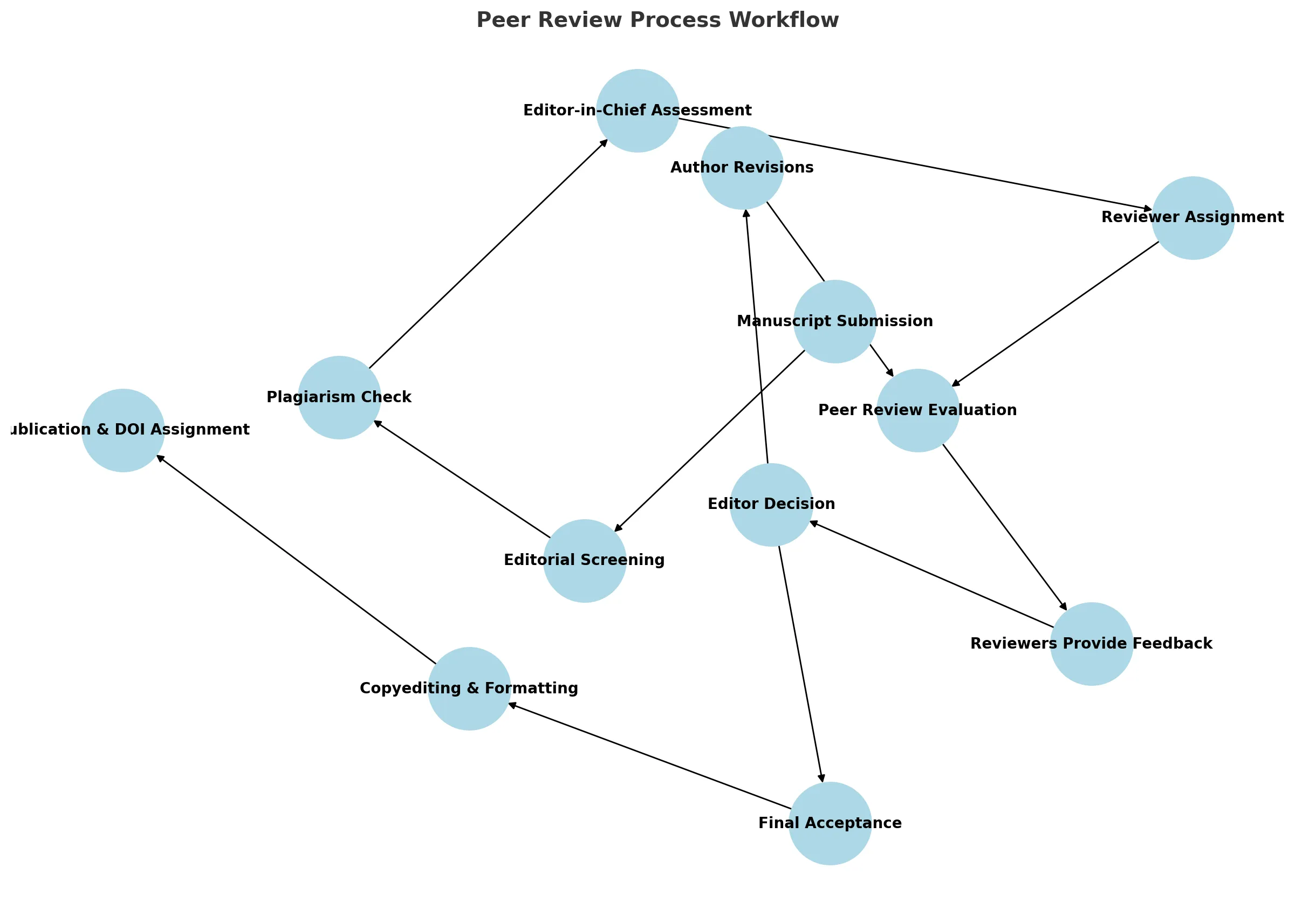Peer Review Process
The peer review process is an essential component of maintaining the high academic standards and integrity of research published in Trends in Computer Science and Information Technology (TCSIT). The journal follows a rigorous and structured peer review system to ensure that submitted manuscripts meet the required scholarly and ethical standards. This process helps improve the quality of research, enhances credibility, and ensures fairness in scholarly publishing.
▪ Peer Review Workflow
The peer review process at TCSIT follows a structured workflow, ensuring efficiency, quality, and transparency. The stages are as follows:

1. Manuscript Submission
- Authors submit their manuscripts through the journal's online submission system.
- The manuscript is checked for formatting compliance and completeness.
2. Editorial Screening & Plagiarism Check
- The editorial office screens the manuscript for relevance, originality, and ethical compliance.
- Plagiarism detection tools such as iThenticate are used to ensure originality.
3. Editor-in-Chief (EIC) Assessment
- The Editor-in-Chief evaluates whether the manuscript aligns with the journal’s scope and quality standards.
- Manuscripts that do not meet the requirements may be desk rejected.
4. Reviewer Assignment
- The Handling Editor assigns two or more independent reviewers with expertise in the subject area.
- Reviewers are chosen based on their research background, expertise, and reviewing experience.
5. Peer Review Evaluation
- Reviewers analyze the manuscript's originality, methodology, clarity, significance, and ethical compliance.
- They provide structured feedback with a recommendation:
- Accept (with or without minor revisions)
- Major Revisions (requiring significant improvements)
- Reject (if the manuscript does not meet academic or ethical standards)
6. Editor’s Decision
- The Handling Editor evaluates the reviewers' feedback and submits a recommendation to the Editor-in-Chief.
- Based on the review, the manuscript may be:
- Accepted for publication.
- Returned for minor or major revisions.
- Rejected due to insufficient quality or ethical concerns.
7. Author Revisions and Resubmission
- Authors are given 2-4 weeks to address reviewer comments.
- Revised manuscripts undergo additional editorial review or further peer review rounds.
8. Final Acceptance
- If revisions meet the required standards, the manuscript is accepted for publication.
9. Copyediting, Formatting, and Publication
- Accepted manuscripts undergo copyediting, formatting, and proofing.
- The final article is assigned a DOI (Digital Object Identifier) and indexed in relevant databases.
▪ Ethical Considerations in Peer Review
TCSIT adheres to the highest ethical standards in the peer review process, including:
- Confidentiality: Reviewers and editors must not share or disclose manuscript details.
- Impartiality: Reviews must be fair, unbiased, and based solely on scholarly merit.
- Plagiarism Detection: Any suspicion of plagiarism or unethical practices must be reported.
- Timeliness: Reviewers should adhere to deadlines to ensure an efficient review process.
▪ Reviewer Recognition and Benefits
The journal acknowledges the valuable contributions of reviewers through:
- Reviewer Certificates: Official certificates are provided for completed reviews.
- Editorial Board Invitations: Active reviewers may be invited to join the editorial team.
- Recognition in Annual Reports: Top reviewers are acknowledged in journal reports.
The peer review process at TCSIT ensures the publication of high-quality, innovative, and ethically sound research. By maintaining a transparent and rigorous review system, the journal upholds the integrity of academic publishing and contributes to the advancement of knowledge in computer science and information technology.
